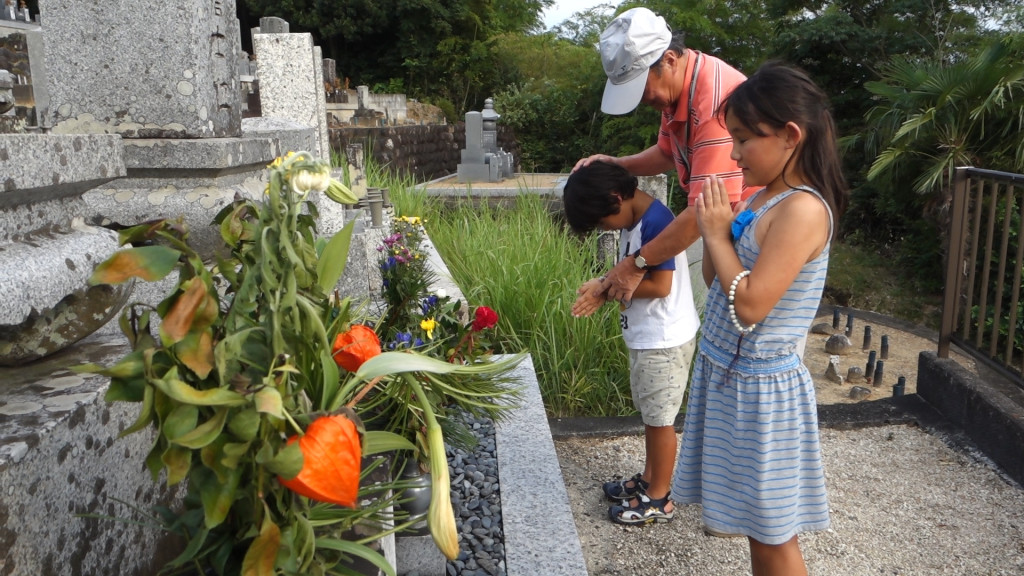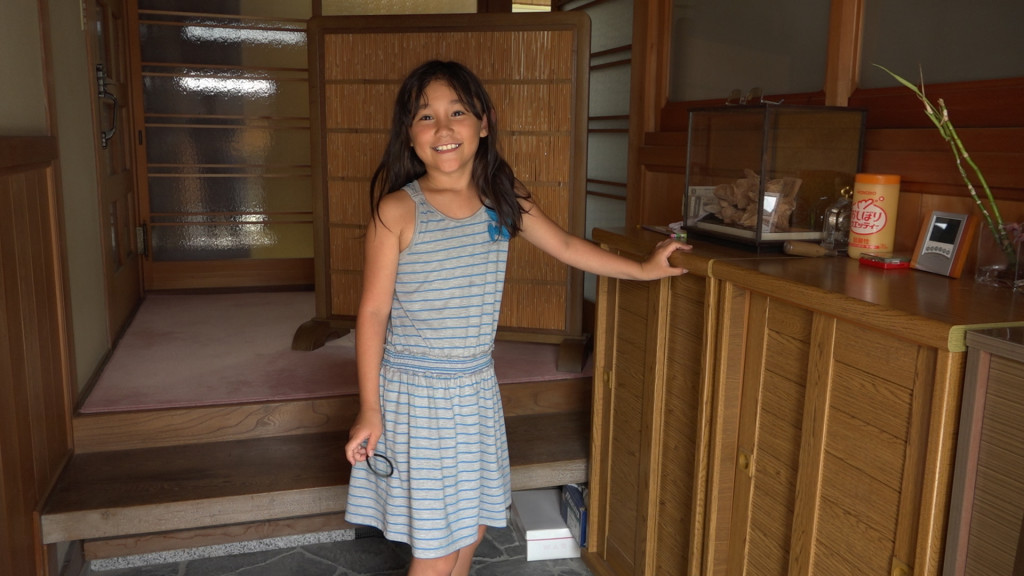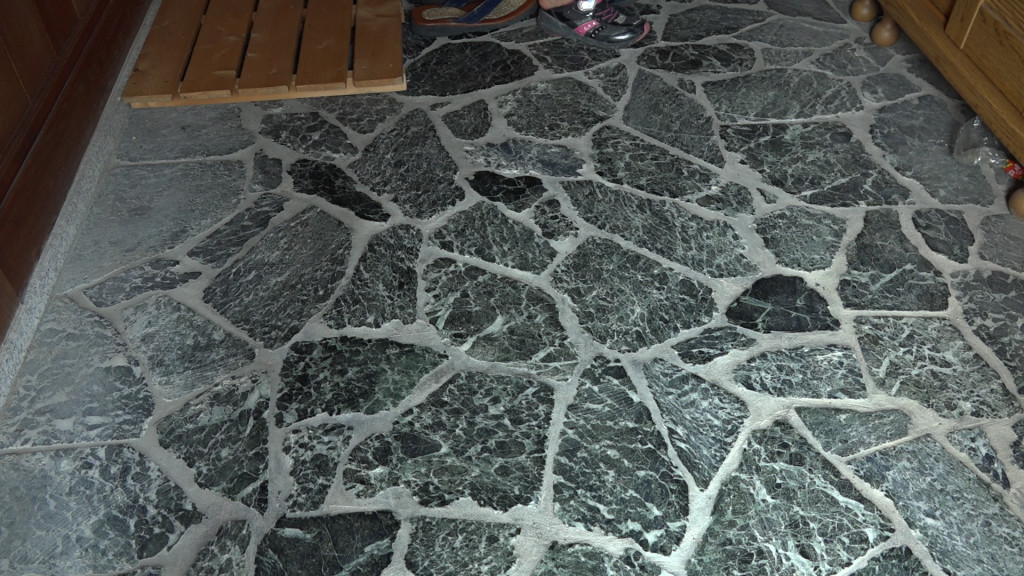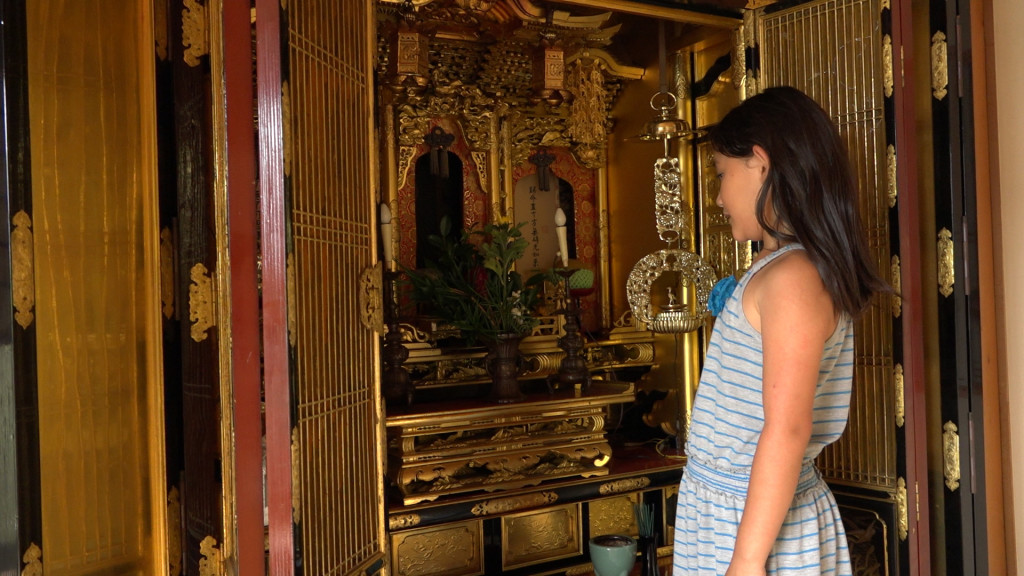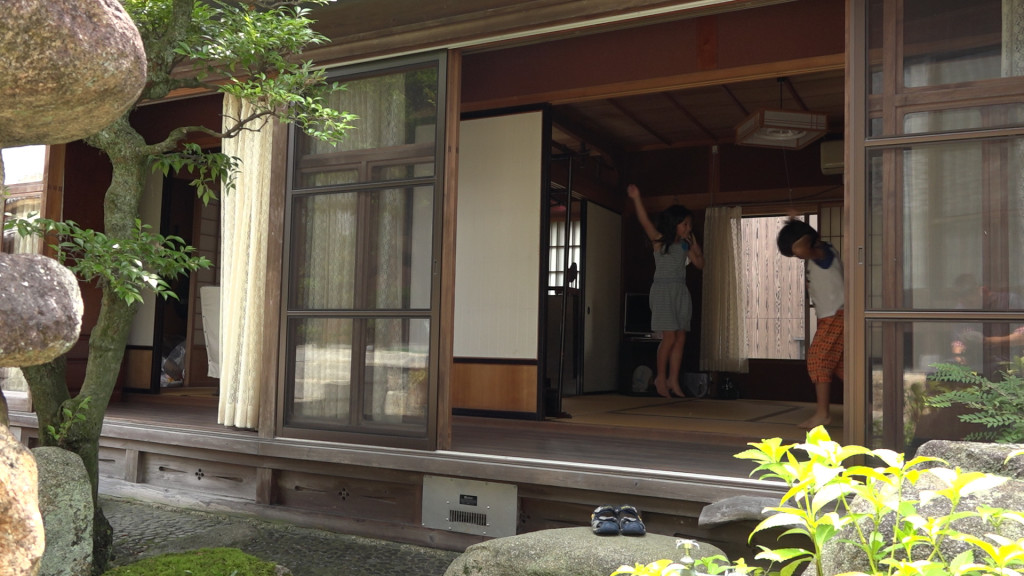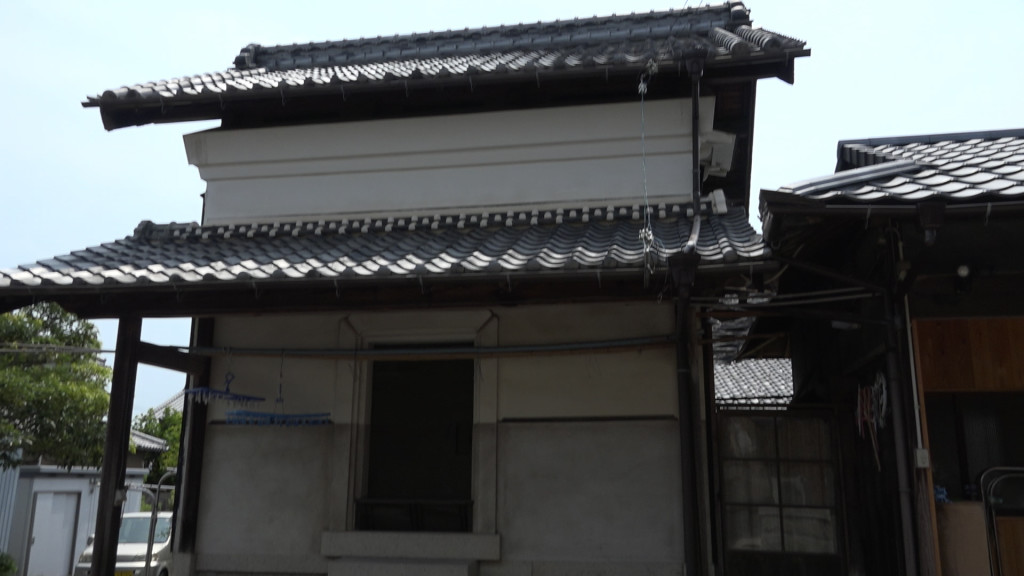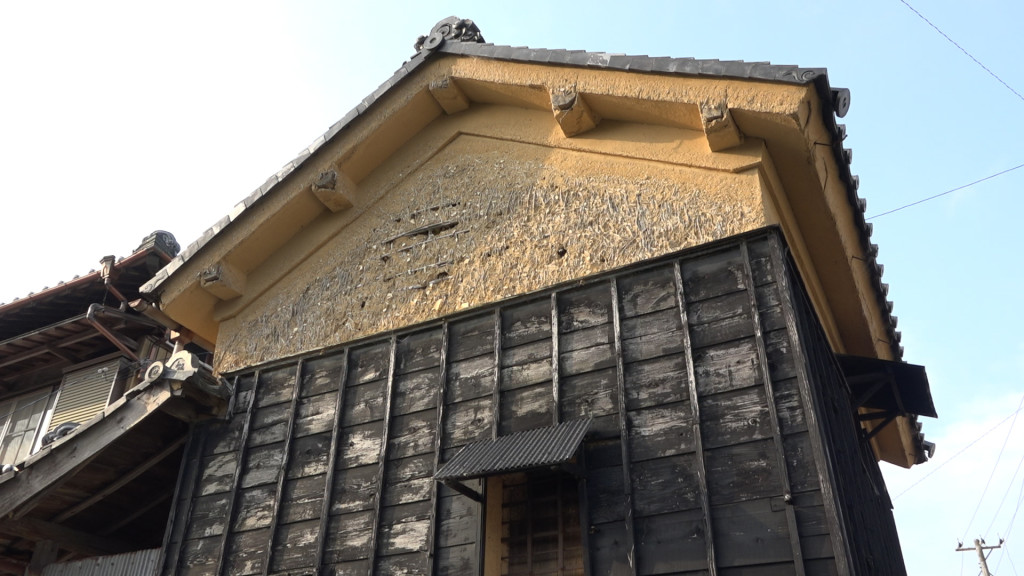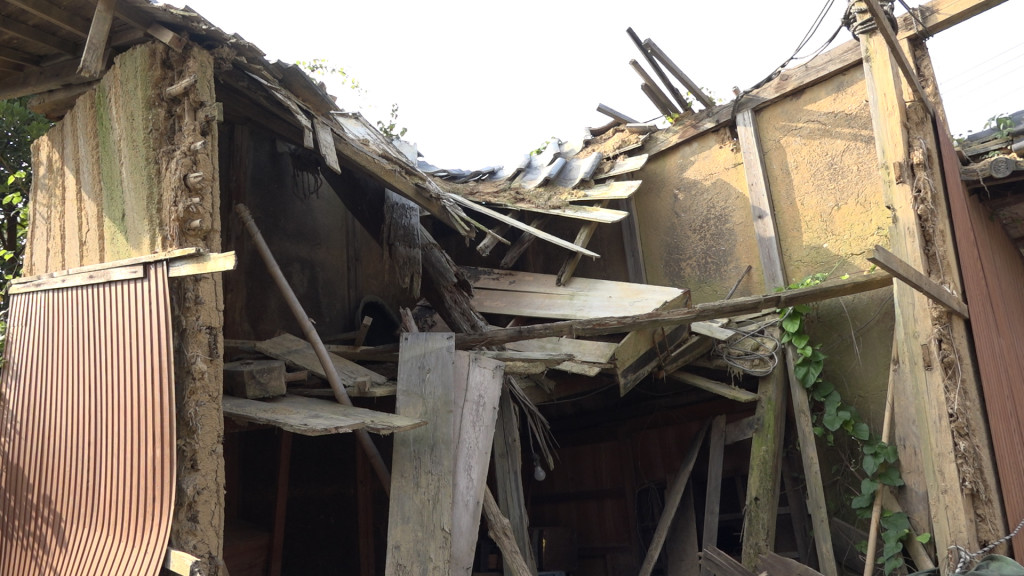Aiko and Shin visit their Great Uncle’s house and pay respects to their ancestors. The house has a storehouse (kura) that may or may not have hidden treasures as well as a separate house just for guests.
This summer we got the chance to visit the town where Aiko’s grandfather (おじいさん) grew up. His oldest brother now lives in the family house that’s been around for about 130 years (it’s been rebuilt several times). The area around the house (Yokkaichi, Mie) is becoming depopulated as the older generations pass away and the younger ones live in the cities. Aiko’s Great Uncle lives by himself in the old family house while his children and relatives reside in major Japanese cities, like Osaka and Tokyo.
Haka – 墓 – Grave
The first scene we see is Aiko and Shin praying at the grave site of their ancestors, specifically her great grandmother that recently passed away. The grave (haka – 墓) is buddhist. They left food for the deceased to eat, although for practical purposes they ate the food themselves when they left. Praying was done with prayer beads called juzu (数珠). Aiko mentioned that they were praying wrong, as they weren’t supposed to rub their hands or make noises (by clapping hands). I think the confusion of how to pray lies in how you pray at a Shinto Shrine, where you do clap your hands as you pray (this was a buddhist grave).
Genkan – 玄関 – Entrance
Aiko entered the century old house through the genkan (玄関), which is a Japanese entrance way. People must leave their shoes at the entrance as they don’t want to bring dirty footwear into the house. This is common in all Japanese homes, old and new. If you visit Japan, you may notice you need to remove shoes when entering changing rooms at clothing stores or at restaurants that have tatami rooms or special seating areas.
Butsudan – 佛壇 – Buddhist Alter
The main room in the house has a large butsudan (佛壇), which means buddhist alter, in it. Usually only one person in the family (which is usually the oldest sibling) will have a butsudan in their house . There are no ashes kept in the butsudan, in case you’re wondering.
Guest house
Since the house is located in the countryside (inaka – 田舎), it’s on a fairly large lot (by Japanese standards) I don’t know if the video shows this well, but there’s a separate guest house separated by a garden.
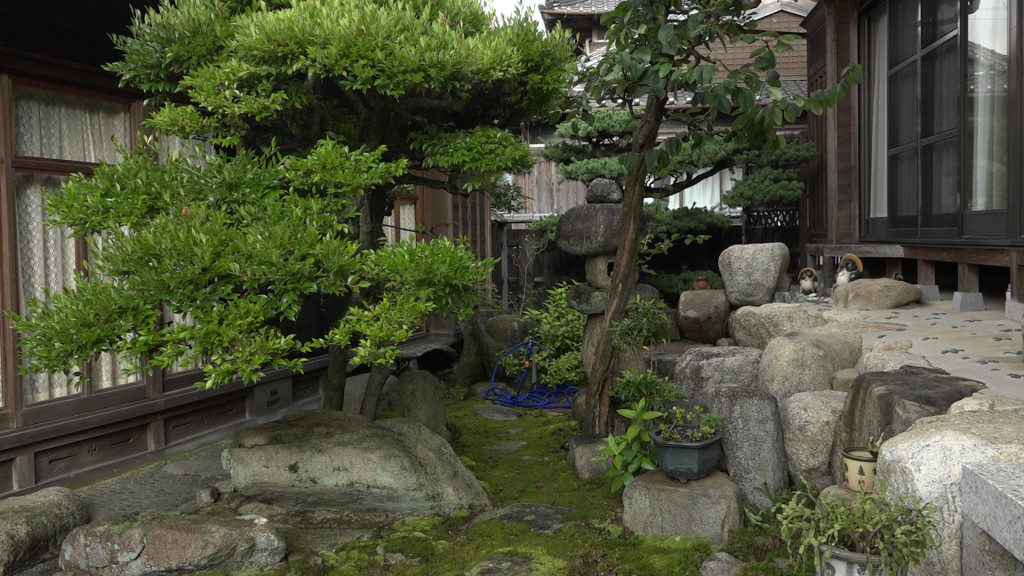
If you’ve seen Tonari no Totoro (My Neighbour Totoro), the style will be familiar (and if you haven’t watched it, you should!)
The guest house has tatami mat rooms, lovely shoji (障子) (dividers/window coverings/doors), and a wood floor walkway (rouka – 廊下) that overlooks the garden.
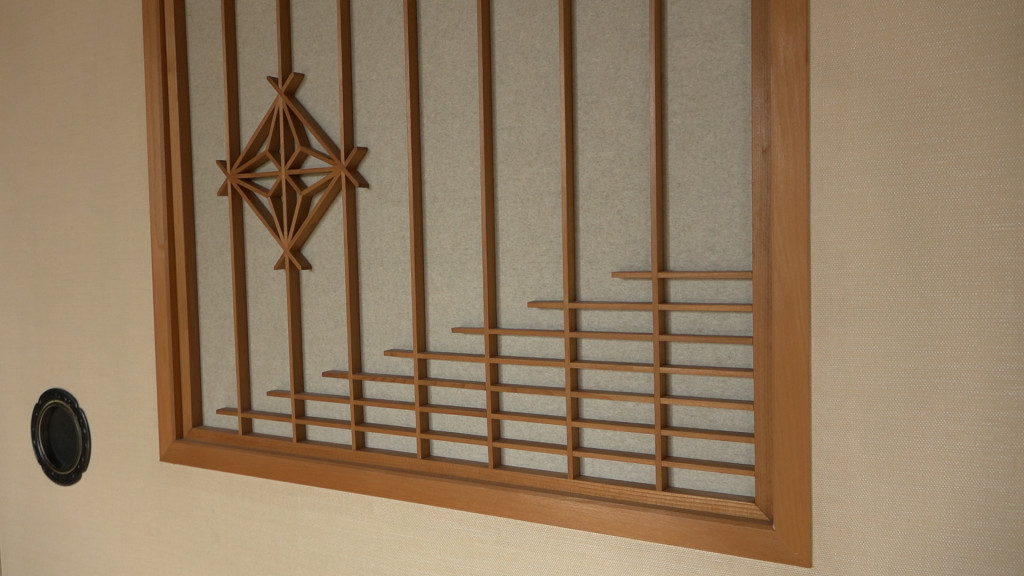
Kura – 倉 – Storehouse
The last place visited in the video was the Kura (storehouse – 倉). We’ve never been in one before, so it was very exciting to see what was inside. Travelling around the old town, we had seen many derelict storehouses, so we were expecting to see something in disrepair.
But, to our surprise, it was very well kept inside. Unfortunately for Aiko and Shin, no treasure was to be found. Shin thought he saw a ghost (yokai – 妖怪), so that’s where the Yo-kai Watch anime reference is from.
What’s an old house like where you’re from?
